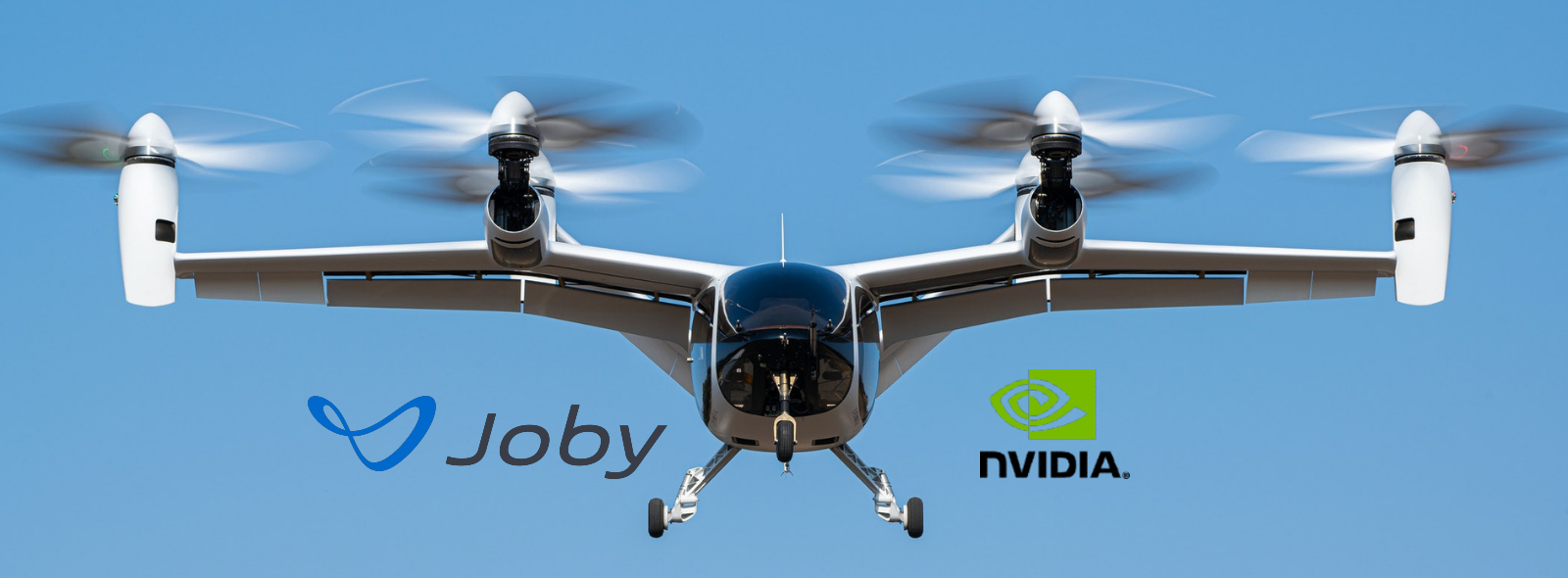Joby Aviation (NYSE: JOBY), the California-based pioneer in electric vertical take-off and landing (eVTOL) aircraft, has named NVIDIA as its strategic autonomy partner, thereby becoming the launch aviation customer for NVIDIA’s new IGX Thor platform, designed to power next-generation AI computing at the edge.
By teaming with NVIDIA, Joby is gearing up to embed advanced compute hardware to power its autonomy stack, branded as Superpilot™ and accelerate its ambitions in both defence and civil aviation domains. NVIDIA’s support for functional safety standards means Joby progress even further in certifiable autonomy.
“The autonomous systems under development at Joby are poised to complement human intelligence by providing speed, precision, and stamina beyond what a person alone is capable of. To achieve this, an aircraft needs a powerful onboard computer that can interpret extraordinary amounts of information to make decisions in real-time. Combining NVIDIA’s compute power with our world-class aircraft design, certification and rigorous flight testing capabilities, we’re enabling a new era of safety-first autonomy in aviation.“ – Gregor Veble Mikić, Flight Research Lead at Joby
“Autonomous cars have showcased the ability to interpret large volumes of data to make split-second decisions. For an aircraft, the compute power needed for autonomy is similarly high, but also needs to meet even higher levels of design rigor to achieve certification for operation in controlled airspace. In aviation, every calculation must be perfect, and every decision infallible.” – Gregor Veble Mikić, Flight Research Lead at Joby
AI: The Next Frontier:
Autonomy is the new frontier in eVTOL
Many eVTOL players have focused on aircraft design: rotors, batteries, noise, range. But the next big frontier is autonomous flight or high-automation flight operations. That requires far more compute, sensors, real-time decision-making, which are more akin to robotics or self-driving cars than traditional aircraft. Joby’s announcement reflects this shift.
NVIDIA made a video titled: “America’s Next Great Leap: The New Age of AI” highlighting the capabilities their AI products a bring across various industries, including aviation and aerospace.
Watch it below:
From S4 to Thor, hardware matters more than ever before:
The hardware that pushes the limits of AI computing, just like the hardware pushing the limits of eVTOL flight, needs to be powerful, efficient and durable. As Joby has done in the with their S4 aircraft, NVIDIA has created a GPU an ecosystem that will benefit many end users in the same fields that the Joby S4 will play a key role (medical, industrial, etc).
NVIDIA Blackwell GPU
The NVIDIA Blackwell GPU is the most powerful graphics processor ever created, delivering up to 20 petaFLOPS of compute on a single chip. Its architecture packs an immense amount of processing capability by combining advanced GPU cores, high-speed memory, and next-generation interconnects. By integrating features such as optimized transformer engines and energy-efficient compute units, Blackwell enables extremely fast AI training and inference, handling large-scale workloads more efficiently than previous generations.

Blackwell AI GPU
- Largest GPU ever built
- 208 billion transistors
- 2.5x number of transistors compared to it’s predecessor (NVIDIA
Hopper GPU)
- Highest compute ever recorded on a single chip (20 petaFLOPS)
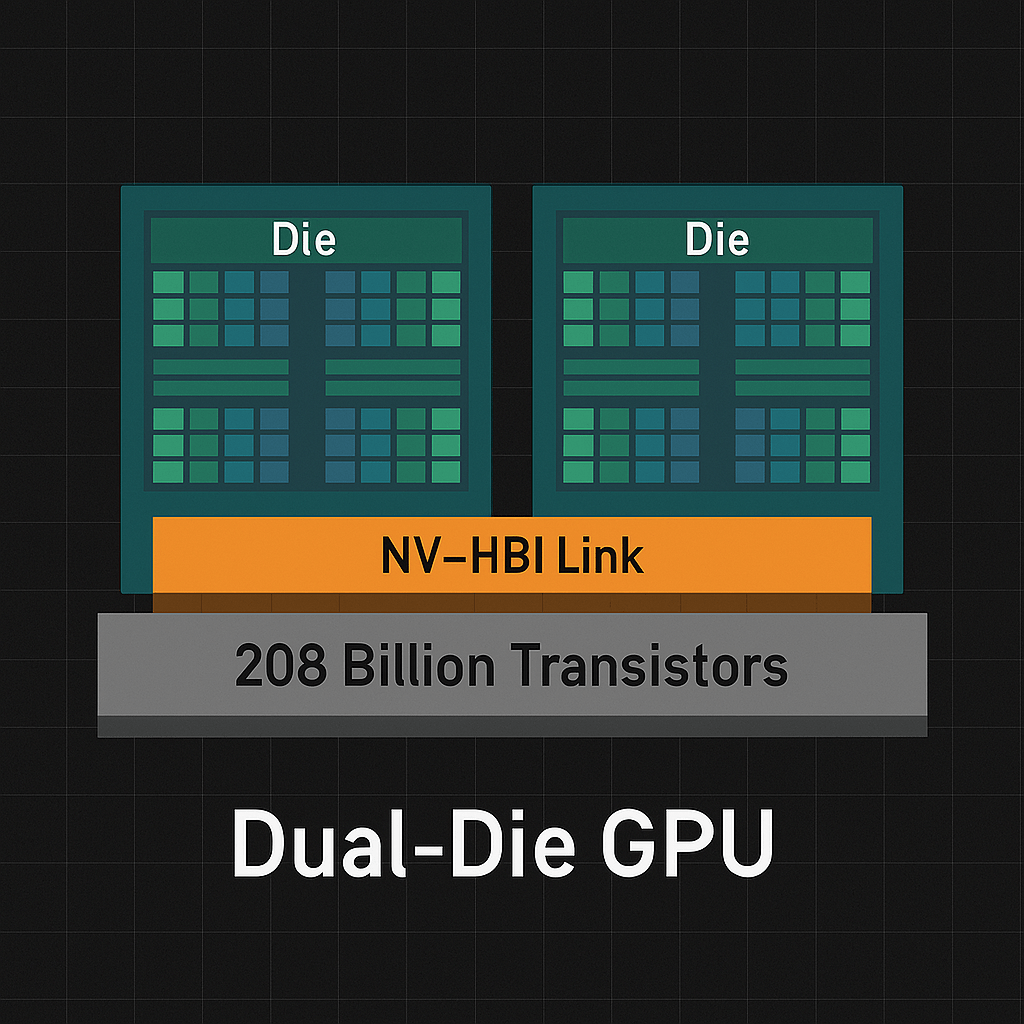
The graph below shows “Throughput” (Tokens Per Second, or TPS) against “TPS for 1 User”, demonstrating that the GB300 can achieve a 50x increase in AI factory output for AI reasoning.

NVIDIA Thor
NVIDIA’s Blackwell-based platform (IGX Thor) is designed for high-throughput AI-inference at the edge, with high reliability and safety targets. For example, in a parallel announcement for robotics applications, Jetson AGX Thor achieved 7.5 times the AI compute of it’s predecessor and 3.5 times the energy efficiency. While the aircraft environment differs, the compute demands (sensor fusion, perception, mission logic, health monitoring) are similar.
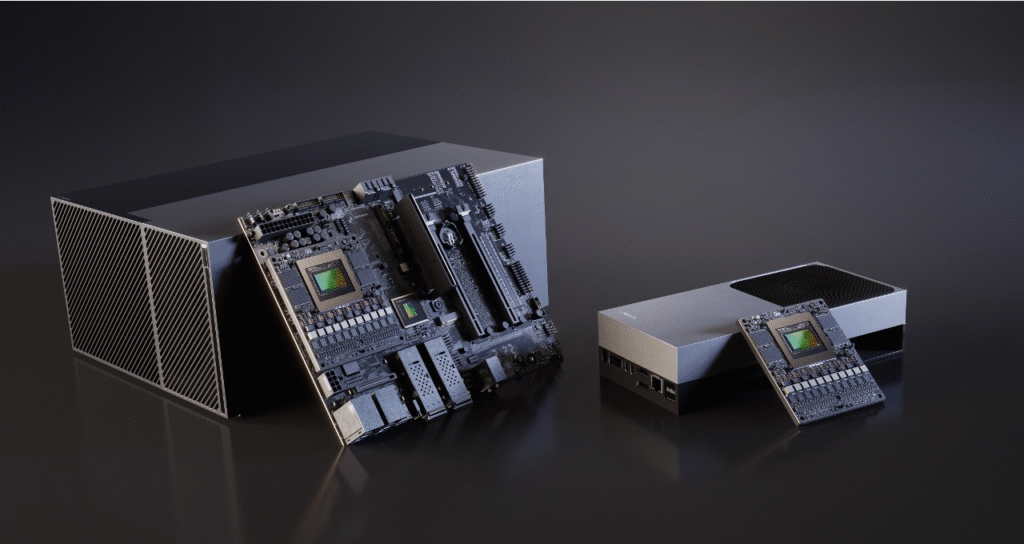
Joby specifically calls out capabilities such as:
- Autonomous Mission Management (dynamic flight path, ATC, weather, unexpected events)
- Radar, LiDAR, vision sensor fusion and perception
- Predictive system health/ maintenance monitoring and digital twin modelling
Thus, hardware is no longer just about redundancy and avionics, it’s about real-time AI onboard.
Spatial Intelligence
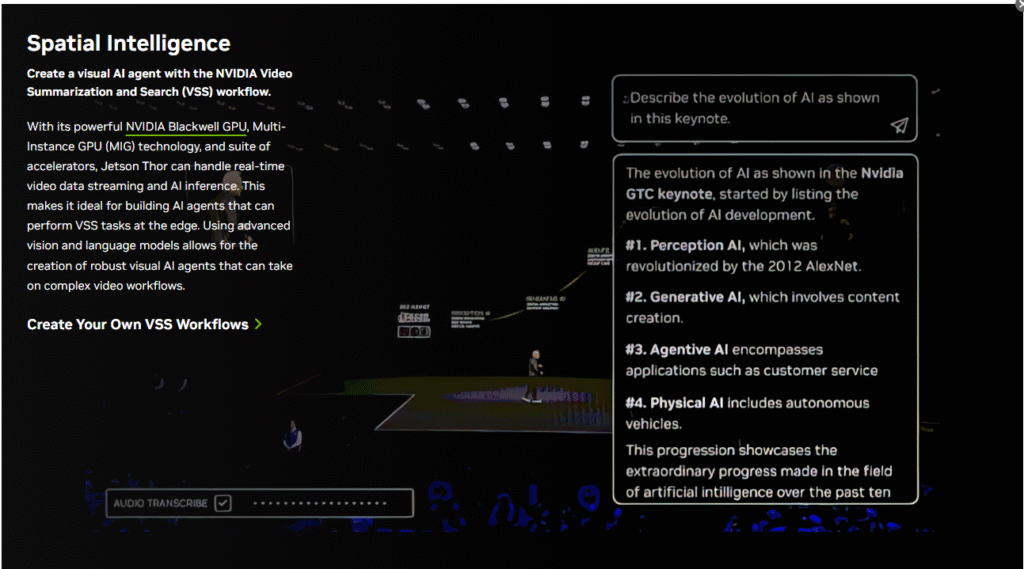
Certification-grade autonomy: the barrier is high
What Joby emphasises is that this is not “just autonomy for demo flights,” but autonomy that must meet functional safety standards suitable for aviation (and defense) platforms. While in automotive you may talk Level 4/5 autonomy, in aviation you need extremely high reliability given the consequences. Thus choosing a partner like NVIDIA gives Joby a more credible path toward meeting these certification hurdles.
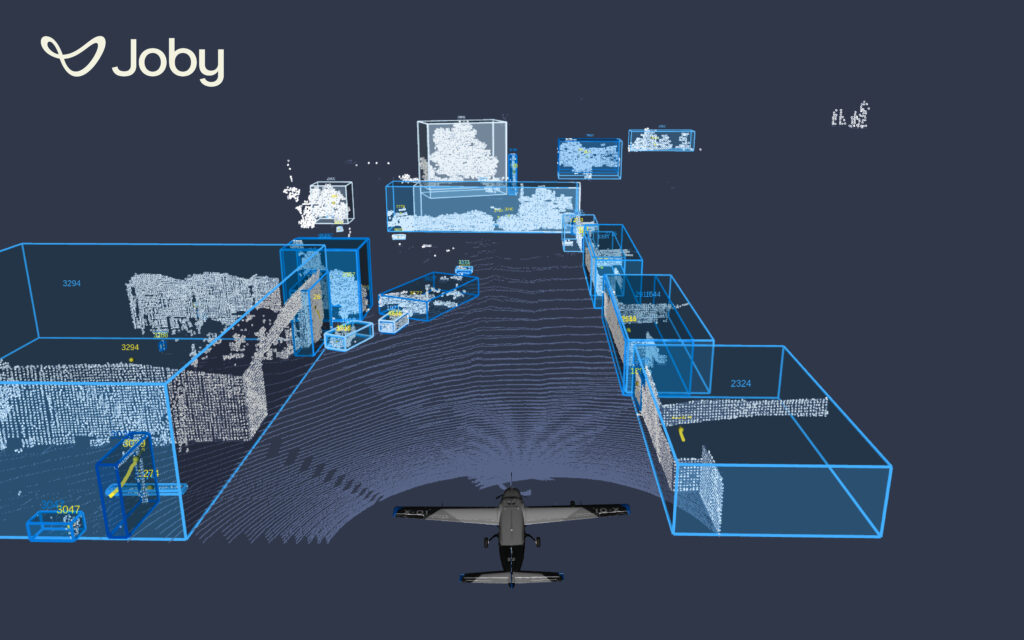

Joby Aviation
- Headquartered in Santa Cruz, California
- NYSE: JOBY
- major eVTOL manufacturer
- Manufacturer of S4 eVTOL aircraft
- Will develop hybrid-electric version, and is currently testing a hydrogen-electric version
- First transition of a full-scale, prototype aircraft on 2017.
- First piloted transition flight on April 22, 2025
- Acquired INFRAS in 2021 and the autonomy division of Xwing in 2024
- Received a total of $894 million in investment from Toyota
- Has obtained numerous defense contracts with the Pentagon and collaborates on testing of its eVTOL aircraft
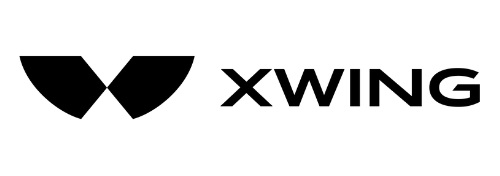
XWING (autonomy division)
- Founded in 2016
- Based in Concord, California
- Acquired by Joby in 2024
- Worked on autonomous aircraft since 2020
- First company to obtain large unmanned aerial system (UAS) certification from the FAA (April 2023)
- First company from AFWERX’s Autonomy Prime program to obtain Air Force Military Flight Release in 2024 as a Contractor-Owned, Contractor-Operated Public Aircraft Operation (PAO) in unrestricted airspace
- Created Superpilot software for autonomous flights
- over 300 fully autonomous flights and 500 auto-landings
- participlated in:
- Agile Flag 24-1
- 2,800 miles of fully autonomous flight
- Agile Flag 24-3 (as part of Joby)
- 3,900 miles of fully autonomous flight
- ReFORPAC 2025
- 7,342 miles of fully autonomous flight
- Agile Flag 24-1

INRAS
- Based in Linz, Austria
- Acquired by Joby on December 21, 2021
- Co-founded by Andreas Haderer and Andreas Stelzer
- Expertise in radiofrequency (RF) systems design, advanced radar sensors, processing boards, and real-time signal processing
- Leaders in airborne sensing and autonomy
Dual-civil & defense ambition
Joby is positioning this compute/autonomy stack for both defense and civil use. The press release states the collaboration “will advance development of Joby’s autonomous flight technology Superpilot™ across military and civil platforms.” That matters because defense contracts often have fewer regulatory constraints and can serve as a stepping stone toward civil certification (and revenue).
Joby has successfully demonstrated autonomous cargo delivery during REFORPAC 2025.
During the exercise, Joby’s Superpilot™ autonomous system successfully operated a Cessna 208 Caravan on multiple long-distance flights over the Pacific Ocean and Hawaiian airspace. The autonomous Superpilot™ system logged 43.7 flight hours, covering a total distance of 7,342 miles. The Cessna 208 Caravan aircraft conducted six sorties, flying for 14 hours and traveling 2,416 miles. Additionally, the mission involved a roundtrip ferry flight spanning 4,925 miles, during which Superpilot™ successfully executed a trans-Pacific crossing, including landings and taxi operations at the designated airports. Remarkably, some flights were controlled remotely from ground stations located thousands of miles away in Guam, demonstrating Joby’s ability to manage aircraft remotely over vast distances.
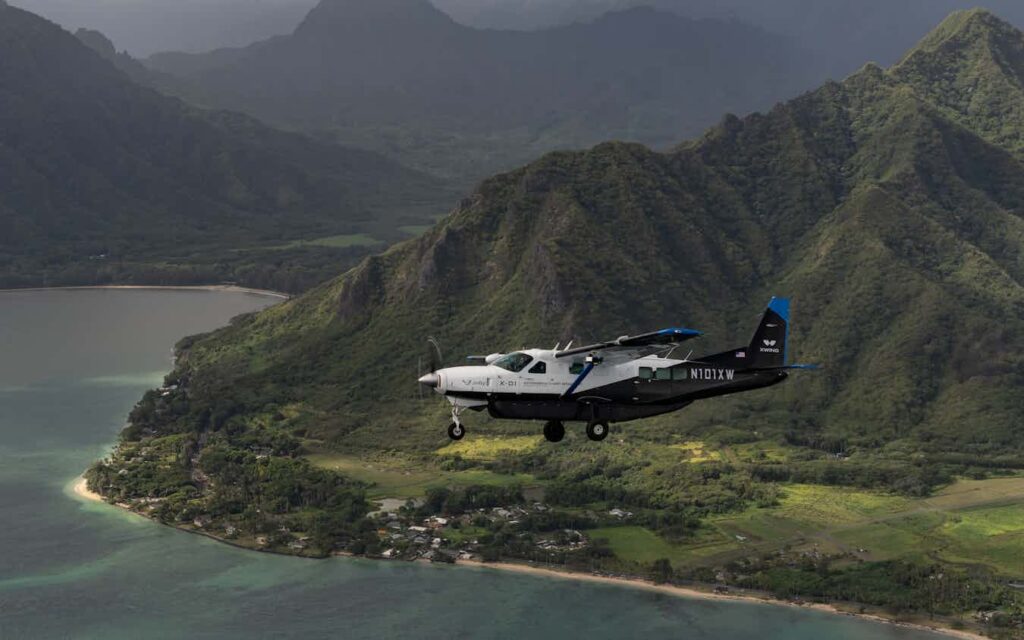
The missions carried out by the modified Cessna 208 Caravan covered a range of scenarios, including rapid cargo transport within a theater of operations, dynamic mission changes, and intelligence, surveillance, and reconnaissance (ISR) tasks. These flights took place in diverse airspace environments, from controlled Class B, C, and D airspaces to uncontrolled areas, under both visual and instrument flight rules. This wide operational envelope underlines the versatility and reliability of Joby’s autonomous system.
Xwing’s Superpilot
L3HARRIS
Joby Aviation and L3Harris Technologies have teamed up in August of 2025 to explore the opportunities for a hybrid VTOL aircraft using gas turbines for low-altitude missions. Such hybrid eVTOL aircraft could potentially be manufactured for defense contracts, and provide the capabilities of switching between unmanned autonomous flight and piloted flights. One interesting feature L3HARRIS will provide is their Smart Swarm technology offered through its AMORPHOUS™ open-architecture platform. For Joby S4 and other future aircraft to link up with a Smart Swarm will provide a whole new level of capability for military end users.
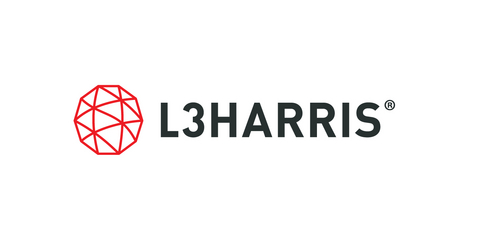
L3HARRIS
- $21B+ Company with many capabilities:
- Autonomous Systems
- Command and Control
- Electronic Warfare
- ISR and SIGINT
- Missile Warning and Defense
- Resilient Communications and Networks
- Works on autonomous FVR (Fixed-Wing, VTOL, Rotary) Unmanned Aerial Systems (UAS)
- FVR-90 Airframe
- Will work with Joby on sensors, aircraft autonomy, and other tech related to VTOLs
- building Smart Swarm technology through its AMORPHOUS™ open-architecture platform

AMORPHOUS™
- Open-architecture system purposely built to scale and manage thousands of autonomous air, ground and naval vehicles simultaneously
- Offers:
- Open Architecture
- flexibility
- interoperability
- Scalability (up to thousands of assets)
- Multi-domain
- Smart Swarm technology
- Single User operation
- Sensor processing & fusion
- Transferable control enables true distributed C2
- Counter-Unmanned Air Systems capabilities
- Open Architecture
Thus, we can see through Joby’s acquisitions of INRAS and Xwing, as well as their recent partnership with L3HARRIS, Joby’s partnership with NVIDIA is the next step in creating an alliance of key players that will help Joby progress in the most efficient and steady manner towards an a comprehensive platform that provides the services and capabilities both military/defense and civilian organizations need.
NVIDIA and Joby Outlook
This announcement from Joby about their partnership with NVIDIA marks a significant inflection point in the UAM/eVTOL industry. It signals that the future of air taxis is not just electric propulsion, it’s autonomous, compute-driven flight systems. By partnering with NVIDIA and committing to an autonomy stack designed for real-time decision making, sensor fusion, and mission logic, Joby is aiming to leap ahead.
That said, the path forward is still fraught with technical, regulatory and business risks. The compute platform may be powerful, but integrating it into a certified aircraft system is a heavy lift. When Joby delivers autonomous missions safely, satisfies regulators and demonstrates economic viability, then it could set the benchmark for future eVTOL operations.
Joby is no longer just building an electric aircraft, it’s building a smart flying ecosystem, and that’s a shift worth watching!
Stay tuned to eVTOL buzz for Joby’s next groundbreaking milestone, where we provide deep dive analysis and the big picture of the eVTOL and UAM industry! ✈️
More Info:
Joby Taps NVIDIA to Accelerate Next-Era Autonomous Flight; Named Launch Partner of IGX Thor Platform: click here
NVIDIA Blackwell Architecture Technical Brief: click here
NVIDIA IGX Thor Robotics Processor Brings Real-Time Physical AI to the Industrial and Medical Edge: click here
eIPP: Fast-Tracking Faster eVTOL Air Mobility for America 🇺🇸: click here
NVIDIA IGX Thor: click here
NVIDIA IGX Thor Robotics Processor Brings Real-Time Physical AI to the Industrial and Medical Edge: click here
Deep Dive: Why Joby is working with L3Harris on hybrid eVTOL aircraft: click here
What Joby’s Autonomous SuperPilot™ at REFORPAC 2025 Means for Defense Industry: click here
#f2fd38

